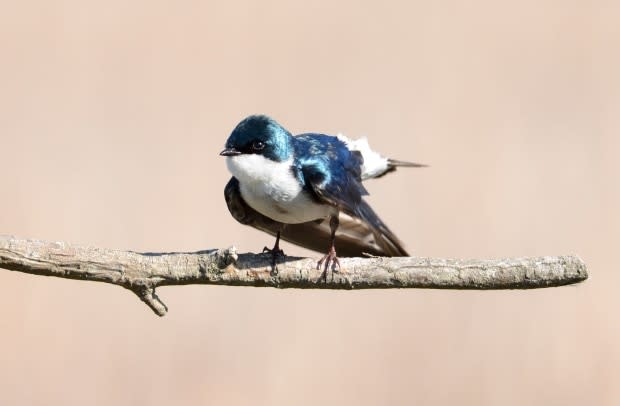N.S. bird watchers shocked by 'staggering' bird declines
Bird watchers in Nova Scotia say they are shocked but not entirely surprised by the findings in a recent report that estimates there are nearly three billion fewer birds in Canada and the United States than there were half a century ago.
The report published Thursday in the journal Science counted a loss of 2.9 billion birds compared with 1970, which represents a population decline of 29 per cent and an "overlooked biodiversity crisis."
"This has been something that has been talked about for many years," said Lucas Berrigan, who works for Bird Studies Canada.
"We've been sort of peripherally aware of it, [it's] just never been summarized in this way before."
The study was co-authored by Environment Canada and Climate Change Canada, along with five United States agencies. It combined population data from more than 500 species going back half a century.
Its findings reflect what's happening in the Maritimes, said Berrigan.
"This is not just North America," he said. "There is a global crisis and I think we need to... take this more seriously than we have previously."

While Bird Studies Canada does not have the same kind of statistics, it is monitoring certain populations, such as aerial insectivores and seabirds like Leach's storm petrel.
"Barn swallows, chimney swifts and nighthawks, as well as seabirds, storm petrels in particular, these are birds that are usually out of sight of most people, but they are of a significant importance ecologically," Berrigan said.
"We've seen quite large declines in those populations. The largest population of one of these seabirds has declined nearly 50 per cent in the past 35 years."
Others impacted include backyard birds, warblers, finches, sparrows and songbirds, as well as long distance birds like swallows and sandpipers that come to Canada from the Arctic.
Berrigan noted that another recently published paper spoke about how neonicotinoid — a pesticide — is affecting bird migration.
"In short, they lose a significant amount of body fat when feeding on seeds treated with very small amounts of [neonicotinoids]," he said.
"Body fat is extremely important for migratory birds since it determines how far they can fly at a given time."
Andrew Holland, a spokesperson for the Nature Conservancy of Canada, said birds are important for many reasons and everyone should care about their decline.
"It's staggering really," Holland said of the study's findings.

"When you look at those numbers, clearly it's a signal that there needs to be more conservation of lands that protect the habitats for the birds that are remaining so that they have a fighting chance of bouncing back."
Habitat loss and climate change are among the major factors impacting the decline of bird populations.

Free-roaming domestic cats, collisions with glass, pesticide use and a decline in insects are also factors, he said.
Holland suggested that people leave their cats indoors.
"A lot of lands have been lost — wetlands, forests, coastal shoreline areas have been lost to erosion, storm surges, development and subdivisions," said Holland.
"So what's happened is these birds have been displaced and they've lost their traditional habitat and they've had difficulty relocating."


